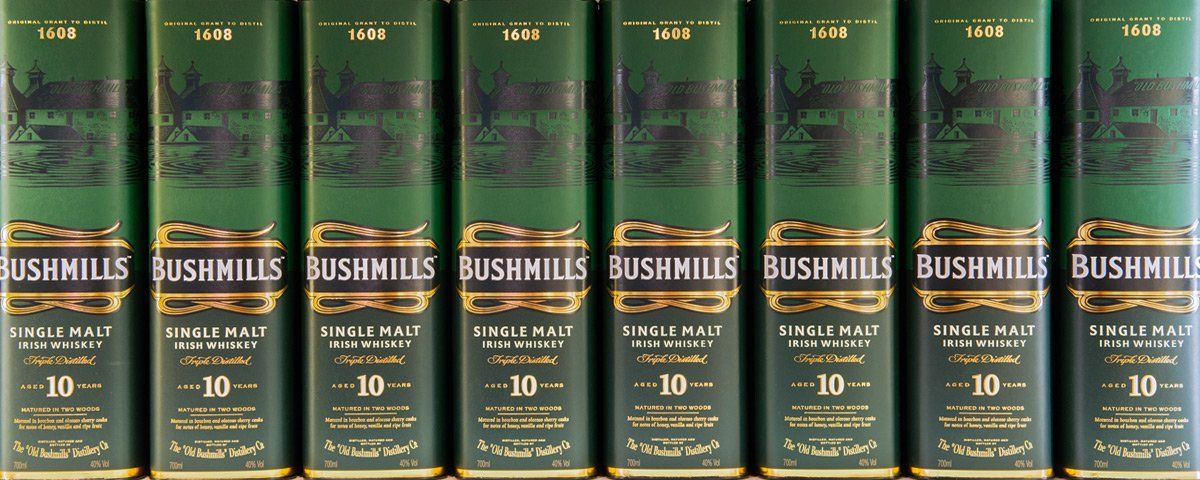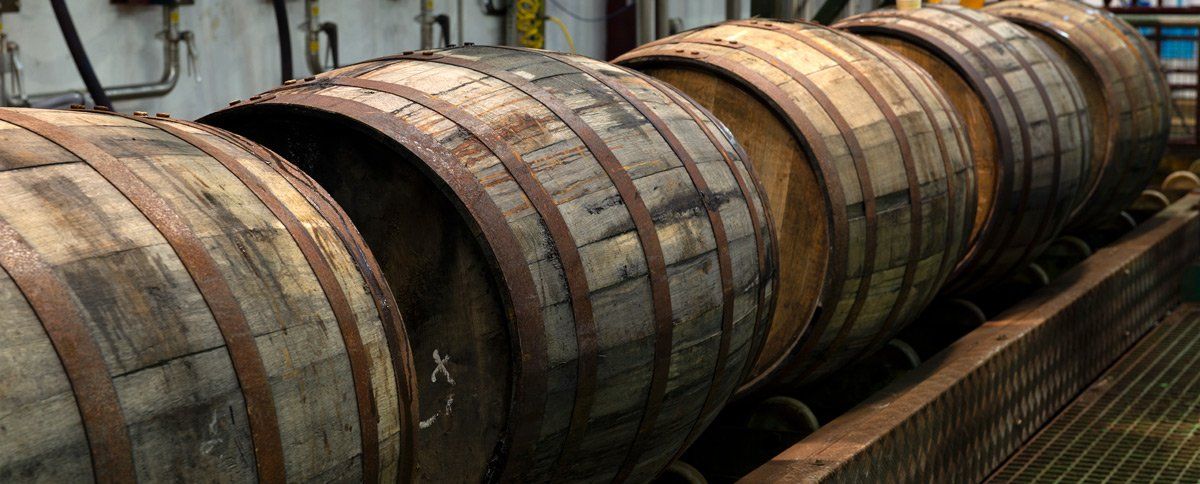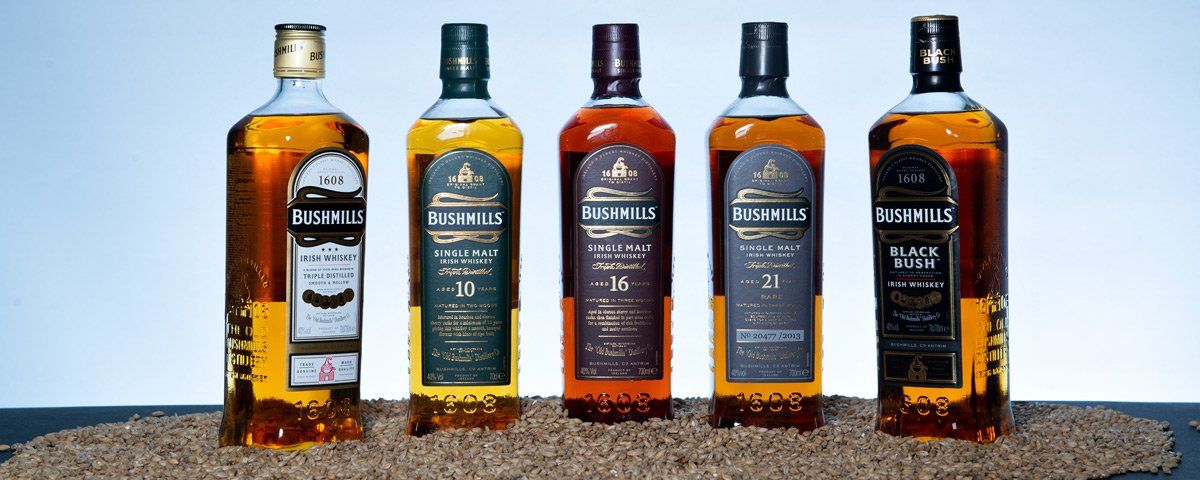Bushmills Distillery
At the top of the village you will find the Old Bushmills Whiskey Distillery, the Victorian architecture dates from 1885 when it was rebuilt after a fire. The production of still or 'aqua vitae' in Bushmills can be traced back to 1276, when the local landlord Sir Robert Savage is documented as giving each of his troops a draught of 'Aqua Vitae' before they went into battle. Further back we have references to distillation of 'aqua vitae' during the reign of King Henry II (1133-89). Where the art of distillation came from and how it arrives in Bushmills is still one of debate but the consensus is that it originated in Asia around 800BC spread to southern Europe and arrived on these shores with the monastic settlements.
Within monasteries, the art of distilling 'water of life' for medicinal purposes was practised and indeed there are records of past and present monasteries producing their variations of distilled and fermented spirit. With the dissolution of monasteries by Henry VIII in the 1500s, the skill passed into the public domain where it was readily taken up. Bushmills was certainly well into the production of 'aqua vitae' before 1600, the settlement was a river crossing close to the merchant village of Dunluce with its port at Portballintrae. The river ford served as a transient location for the traveller and an ideal opportunity to carry out trade.
As production levels increased and the widespread use of 'aqua vitae' took place throughout the kingdom an Act of Parliament was passed in 1552 which lay down the beginnings of modern licensing laws. In Ireland an Act of Parliament passed in 1556 made it a crime punishable by imprisonment, to produce 'aqua vitae' without a license from the Lord Deputy of Ireland. There was a wonderful loophole in this act which permitted the landed gentry and those of high status to continue producing it freely. The act came down on the ordinary individual engaged in distilling but not on those who could make real money out of it. The whole issue was revised in 1606 which resulted in a register and the granting of licenses to distil 'aqua vitae' by the King.
According to Samuel Morewood (Inebriating Liquors' published in 1838), the first 7-year license granted in Ireland by the Lord Deputy was to Walter Taillor of Dungurey, County Galway on 23rd March 1607. This empowered him to recommend persons to the Lord Deputy for the distillation of 'aqua vitae' in the Province of Connaght and also gave Walter Taillor the liberty to produce 'aqua vitae' in any part of Connaght he saw fit and to sell it anywhere in Ireland at the crown rent of £40 per annum. Three more Provincial licenses were granted: Charles Watehouse for Munster in January 10th 1608 at a crown rent of 6s.8d, George Sexton for Leinster on March 23rd 1608 at a crown rent of 5s.0d and Thomas Phillips for County Coleraine and the Route on April 20th 1608 at a crown rent of 13s 4d.
If Samuel Morewood is correct then the oldest license was granted to Walter Taillor who paid a significant amount more than the other three and with much wider permissions. These initial licenses led to the recommendation of numerous other persons to the Lord Deputy for distillation of 'aqua vitae' throughout Ireland. On May 20th 1620, however, these privileges were withdrawn after complaints that they were favouring a few individuals. For the next 50 years, permission to run a tavern or make 'aqua vitae' in Ireland was granted by appointed gentry who paid for the right. Whoever was the earliest licensee, Thomas Phillips was responsible for establishing the awareness of 'Bushmills' and the early marketing of the product with his peers both in Ireland and in the Royal Courts of London.
Phillips was at the time, a key player in the Plantation of Ulster and also governor of the County of Colrane (no longer in existence). Very little is recorded or heard of Taillor, Sexton or Waterhouse or indeed what became of their licenses to distil. Apart from small snippets here and there references to Bushmills whiskey is very scarce until 1743 when 'Old Bushmills' is referred to as being run by smugglers. Maps from the 1730 and 1750 do not show a distillery which would indicate distilling was still taking place on a small scale, perhaps in houses or other buildings. We don't know what happened to Thomas Phillips license or who continued the tradition over the next ninety years.
In 1782 there were five licensed stills in Bushmills producing 'aqua vitae' and numerous unlicensed stills, it can be assumed the licensed production stemming from Thomas Phillips was with one of these. The first reference to 'Old Bushmills' as a distillery comes in the Excise Survey of 1784 which officially recognises the registration of a distillery in Bushmills to Hugh Anderson. He formed the Bushmills Whiskey Company and was the first registered owner in 1784, at the time five other stills were operating locally, mostly illegal. The Distillery at this time was no more than a cottage industry which was part of the surrounding land that Hugh Anderson developed and farmed, at that time 'Old Bushmills' is recorded as producing 10,000 gallons of whiskey annually.







